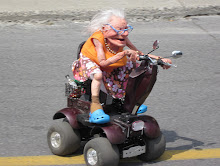


Sammy went to the sale and bought young silkie chickens. he gave 1.75 for the 11 younger ones and 3 dollars each for the bigger one. I couldn't believe what he gave for them they will be worth 20 dollars each this spring.Silkie's have 5 toes on each foot and black skin. In china the black skin is prized for eating.
Silkies
Silkie Colours
Silkie Chickens are one of the oldest of the rare breeds of poultry. It is said that Marco Polo wrote about seeing Silkies in the Orient in 1200 A.D. during his travels.
They are a bantam with standard weights allowed by the American Poultry Association's Standard of Perfection 1993 listing as Cock (Adult male) at 36 oz, and Hens (Adult females) at 32 oz.
DESCRIPTION:
Silkies are very unusual looking chickens. Their feathers are missing the barbules that hold them into the traditional rigid feather. Their feathers appear to look like hair, they also have black skin, bones, five toes and feathers on their feet, mulberry colored walnut shaped combs, light turquoise almost iridescent looking earlobes all combine to make Silkies one of the most unusual breeds of poultry.
WHY KEEP SILKIES:
Silkies are one of the most docile, sweet tempered chicken breeds I have kept. Silkies great functionality are their ability to sit, and sit they will. Most of our domestic breeds of poultry have had all their mothering skills breed out of them in the process of improving meat or egg production. Anyone who has raised chicks and had to deal with Turing eggs, worrying about lights and temperature of the incubator and brooder knows this is a lot of work and a mother chicken does a better job anyway. Silkies are tremendous sitters and, wonderful mothers. I have heard the stories about roosters hovering chicks but wasn't until one winter when I saw my Partridge rooster move and four chicks popped out from under him I believed it! Silkies make good pet birds for kids. It is hard to get egg production out of them not because they don't lay, but they go broody (want to sit on eggs) so often interrupting their laying. If they don't have eggs, any round rock will do, no rock, they will sit on empty nests! Mothers will steal any other hen's chicks she can. Silkie hens will also share mothering with a batch of chicks.
SILKIE VARIETIES:
Silkies come in White, Black, Buff, Blue, Splash, Partridge, Grey. Bearded and non-bearded. Whites and black have been breed for show and are more developed in their body types than the colored varieties, usually having larger crests, shorter necks and smaller combs.
SILKIE HOUSING AND CARE:
They need to be protected as they are very docile, with their crests and inability to fly as well as most chickens they are more susceptible to predators. I recommend housing that will protect them from ground and flying predators. Silkies don't seem to like high roosts or housing preferring to stay about 2 to 4 feet above ground at the maximum. They camp in great piles on the ground with several roosters, hens and young birds all sleeping together. Most feather-footed breeds don't do well with their feet in the mud. Baby Silkie chicks are hardy for their size, but feeders and water bowls need to be adapted to accommodate their tiny size.


2 comments:
Sam the bargain man..
Are you out there?
Post a Comment